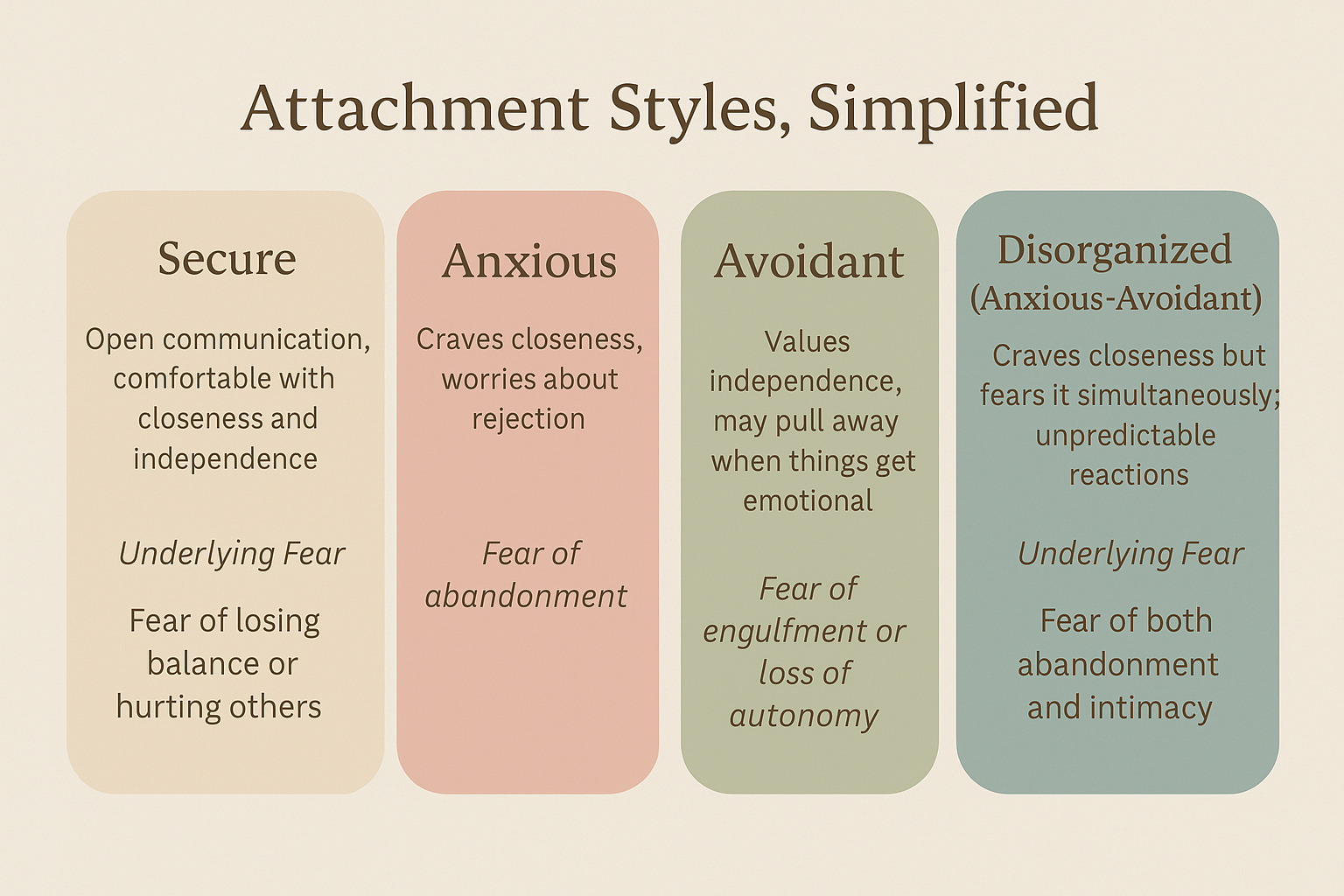Attachment Styles 2.0: Why TikTok Got It Half Right
.png)
Attachment Theory: Now Trending (Again)
If you’ve ever heard phrases like “I’m so anxious-avoidant” or “He’s totally dismissive-avoidant energy,” you’ve seen it—attachment theory has officially gone viral.
On TikTok, creators are breaking down complex psychology into 60-second summaries. You can scroll through endless “Which attachment style are you?” videos, self-diagnosis quizzes, and couple-therapy confessionals.
It’s helped millions of people name the patterns that shape their relationships—but the internet version of attachment theory only tells half the story.
What TikTok Got Right
Attachment theory at its core is powerful and accessible. It helps us understand:
- Why we connect the way we do.
- Why we pull away or cling when relationships feel uncertain.
- Why some people feel “too much” while others feel “too distant.”
TikTok deserves credit for making psychology mainstream. Many people who would never pick up a psychology book are suddenly learning words like secure, anxious, and avoidant—and recognizing themselves in those patterns.
For some, it’s the first time they’ve felt seen.
.png)
What TikTok Gets Wrong
Where the internet sometimes misses the mark is oversimplification.
Real attachment isn’t a label—it’s a spectrum shaped by experience, biology, and emotional learning.
❌ Myth #1: “You’re one style forever.”
In reality, attachment styles are fluid. You might feel secure in friendships but anxious in romantic relationships—or avoidant with one partner and open with another.
Your attachment style can evolve through therapy, healthy relationships, and self-awareness.
❌ Myth #2: “Avoidant people don’t care.”
Avoidant attachment often develops as a coping mechanism—a way to feel safe when closeness once felt overwhelming. It’s not about lacking emotion; it’s about managing vulnerability.
❌ Myth #3: “Anxious = clingy.”
People with anxious attachment don’t want to smother—they want reassurance. They often learned early on that love was unpredictable, so they seek stability through connection.
These are not personality flaws—they’re protective patterns.

The Toronto Twist: How Urban Life Shapes Attachment
In a fast-paced city like Toronto, attachment dynamics get amplified.
Constant busyness, dating-app culture, and long work hours make true emotional connection harder to sustain.
- Anxious partners may feel ghosted more easily.
- Avoidant partners may feel safer behind screens than in person.
- Secure partners may struggle to find relationships that match their stability.
Therapy can help you unpack how city life—and its unique pressures—affects your emotional availability.
From Awareness to Healing: Moving Toward Secure Attachment
Understanding your attachment style is only step one. The real work begins when you start healing the fears underneath.
Here’s how therapy can help:
🪞 1. Self-Awareness: Recognize the Pattern
Your therapist can help you identify where your attachment responses come from.
Example: “When I text and don’t get a reply, I spiral into anxiety.”
The goal isn’t to judge—it’s to notice.
💬 2. Reframing Old Stories
Attachment wounds often stem from childhood experiences—feeling unseen, unsupported, or rejected. Therapy helps you rewrite those internal narratives:
“It’s not that I’m too much. It’s that I learned to seek love loudly.”
🤝 3. Building Emotional Tolerance
If you tend to pull away or panic during conflict, therapy helps you build tolerance for closeness and discomfort.
You learn that relationships can handle tension without breaking.
🧩 4. Practicing Secure Behaviours
Over time, secure attachment becomes a skill:
- Communicating needs directly.
- Setting and respecting boundaries.
- Expressing emotions without fear of rejection.
- Allowing space without disappearing.
Therapy turns awareness into everyday action.
.png)
The Science of Change
Neuroscience backs this up: your attachment style lives in neural pathways shaped by early experience—but those pathways are plastic.
Through consistent, healthy emotional experiences, your brain can rewire itself toward security.
That’s why working with a therapist isn’t about “fixing yourself.” It’s about creating new experiences of safety, empathy, and connection—over and over, until they become natural.
Attachment Style Isn’t a Diagnosis—it’s a Starting Point
Your attachment pattern doesn’t define you. It’s just a map of where you’ve been—and a clue about where to go next.
So instead of saying “I’m avoidant” or “I’m anxious,” try:
“Sometimes I react this way when I feel unsafe.”
It turns a label into a lens.
.png)
Therapy Helps You Build Secure Relationships—Starting with Yourself
You don’t have to navigate attachment alone. Whether you’re trying to understand relationship patterns, heal from heartbreak, or learn to trust again, therapy gives you tools for healthy connection.
At KMA Therapy, our clinicians help clients across Toronto explore attachment through compassion, not judgment. We meet you where you are and help you move toward connection that feels safe, steady, and real.
👉 Book your free 15-minute discovery call today.
Meet with one of our warm, skilled therapists at our Yonge & Sheppard or Yorkville locations—or online anywhere in Ontario.
Because building secure attachment isn’t about changing who you are—it’s about remembering you were always worthy of love that feels calm.






